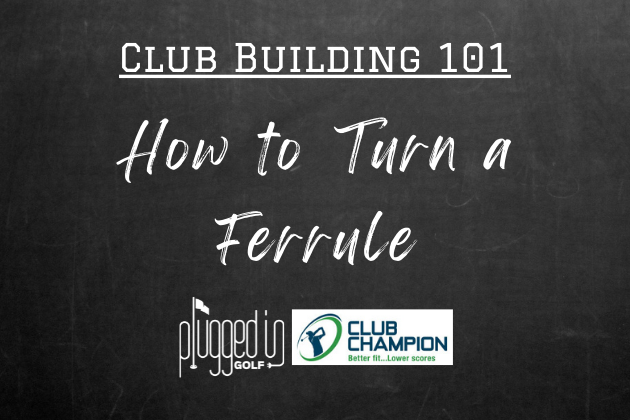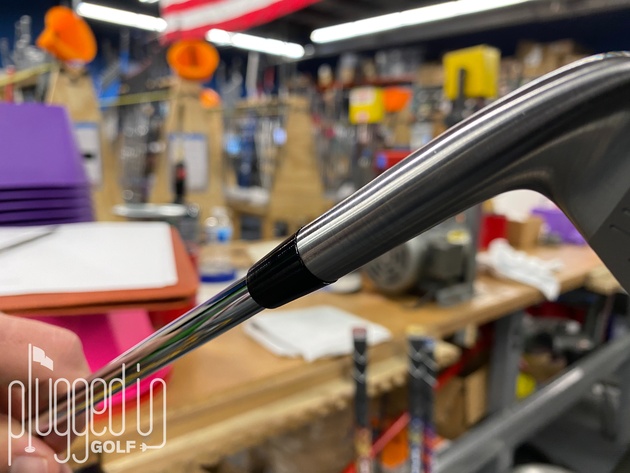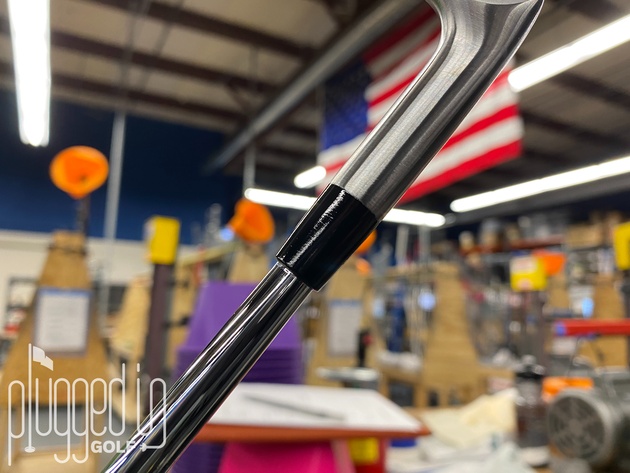The Finishing Touch
A ferrule does nothing for the performance of a club, but it makes all the difference in how it looks. Whether you opt for colorful ferrules or traditional black, you want them to be turned perfectly. In this edition of Club Building 101, Club Champion Founder Nick Sherburne shares his secrets for turning the perfect ferrule.
Tools & Supplies You Need
Vice
Acetone
Washcloth
The Tools You Want
Belt sander with Egyptian belt
Sander attachment to stabilize shaft
The Process
Step 1: Turn on belt sander. Let the belt sander get up to speed.
Step 2: Use the sander the shave down the ferrule. Rotate the shaft opposite the direction that the belt is turning. Also, as Nick explains in the video, you should not push hard into the belt. Just as with cutting, you can always take more off, but you can’t put it back.
Step 3: Clean up with steel wool. After you’ve finished turning the ferrule on the belt and removing most of the material, use steel wool. Be very careful (or skip this step) if there’s paint around your ferrule.
Step 4: Remove excess epoxy with a hook or utility blade.
Step 5: Wipe ferrule with acetone and paper towel. Nick recommends wiping up the shaft toward the grip. You can go around the shaft, but Nick warns that this may leave lines in your ferrule.
Alternate Methods
It is possible to turn a ferrule entirely by hand. You can use sand paper, steel wool, and/or acetone from start to finish, it will just take more time than using a belt sander.
Common Mistakes
Going too fast. The single biggest mistake you can make is pushing too hard into the belt sander to try to get this job done quickly. Take your time and apply light pressure.
On a similar note, keep your pressure even. If you press in too hard or get “choppy,” you can remove too much material and end up with an uneven ferrule.
Pro Tips
On the belt sander, the key is going slow and being smooth. You’ve taken a lot of time to build your club perfectly. Don’t ruin it now by rushing. Press lightly into the belt and keep the club moving.
Finally, Nick recommends wiping with the acetone rather than rolling. This means wiping up toward the grip rather than spinning around the ferrule. This is more a preference than a hard and fast rule, but Nick has built more clubs than our entire readership combined, so I’ll defer to his experience.
Watch the Video HERE
The Full Club Building 101
How to Measure & Adjust Swing Weight
He founded Plugged In Golf in 2013 with the goal of helping all golfers play better and enjoy the game more.
Matt lives in the northwest suburbs of Chicago with his wife and two daughters.
- Performance Golf Click Stick Training Aid Review - October 18, 2024
- Callaway Opus Platinum Wedge Review - October 17, 2024
- When to Take a Break from Golf - October 15, 2024



















3 Comments
Many of the ferules on my clubs have migrated slightly up the shaft (away from the clubhead), leaving a gap between head and ferule. Does this present any problems? Can you explain why this happens?
Thanks in advance,
Danny
HC: 7.4
Danny,
The ferrule is just aesthetic, so it’s not going to cause any issues for playability. The cause is either the ferrule was never glued to the hosel of the iron or the glue broke down somehow.
Best,
Matt
I think what happens is that epoxy when curing is exothermic. So therefore some expansion happens. I use duct tape strip from the ferrule then to the hosel to keep it in place during curing. Works like a charm.
Ferrule creep is probably more important for a centering ferrule than a regular ferrule, but I don’t know that for sure.